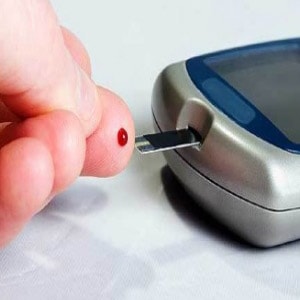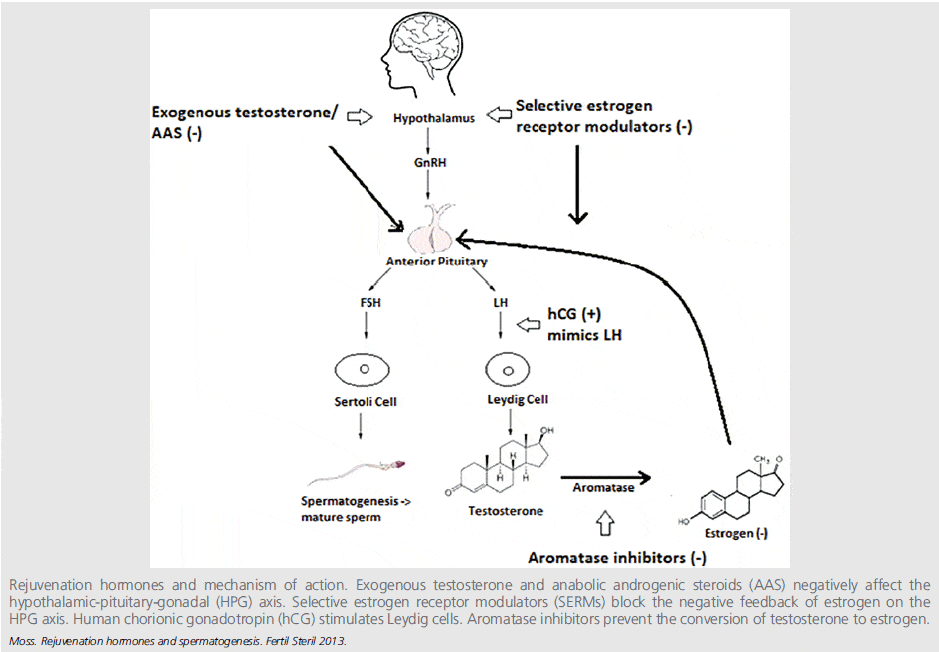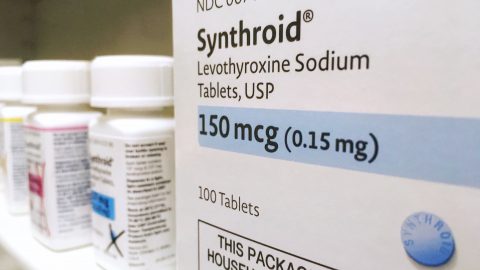Prediabetes is a condition in which blood glucose level is higher than normal but does not reach the level for diabetes diagnosis.[1, 2] Studies have shown that people with prediabetes tend to develop type 2 diabetes within 10 years, and are at increased risk for cardiovascular disease.[1]
Among US adults over 18 years, the prevalence of prediabetes has increased from 29.2% in 1999 to 36.2% in 2010.[3] Considering the entire US population in 2010 (approx. 309 million, data from US Cencus), this corresponds to 112 million US adults, or over one third of the US population.
Data from non-diabetic men have revealed an inverse association between insulin resistance and testosterone levels; i.e. a higher degree of insulin resistance is associated with lower testosterone levels.[4-6] This raises the question whether prediabetes, which is a state of increased insulin resistance, is also associated with low testosterone. However, few studies have investigated testosterone levels in men with prediabetes, and the risk of testosterone deficiency in men with prediabetes has not been reported.
Because the prevalence of prediabetes is affecting such a large number of Americans, and is on the rise, it is important to investigate how this condition might affect testosterone levels. Knowing that can help detect men who are likely to have testosterone deficiency and might be at risk for health complication caused by low-T.
OBJECTIVE:
A recent study was conducted to investigate whether men with prediabetes are at an increased the risk of testosterone deficiency.[7] Furthermore, as prediabetes is closely linked to obesity and metabolic syndrome, both of which are associated with testosterone deficiency [8], this study also explored whether the relationship between prediabetes and testosterone deficiency, if present, is independent of these factors.[7]
METHODS:
This study included 1,306 men whose sex hormones was measured during a medical examination. Serum total testosterone and sex hormone-binding globulin were measured; free and bioavailable testosterone concentrations were calculated by Vermeulen’s formula.[9]
Prediabetes was diagnosed if any of the following criteria was met: 
1) fasting glucose 100-125 mg/dL (IFG, impaired fasting glucose),
2) two-hour postprandial glucose 140-199 mg/dL (IPG, impaired postprandial glucose), or
3) HbA1c 5.7%-6.4%.
The definition was adopted from the recommendations of the American Diabetes Association (ADA).[10]
Study subjects who had their levels below these cut-off were considered normoglycemic and not at risk.
Diabetes was diagnosed if a study participant had a prior history of diabetes or if the glycemic variables for prediabetes reached the criteria for diabetes:
1) fasting glucose at or over 126 mg/dL
2) two-hour postprandial glucose at or over 200 mg/dL, or
3) HbA1c at or over 6.5%
The diagnosis of metabolic syndrome was based on the modified ATP III criteria], and a study participant was considered to have metabolic syndrome if any three of the following were met:
1) waist circumference over 90 cm
2) triglycerides over 150 mg/dL
3) high-density lipoprotein cholesterol below 40 mg/dL
4) blood pressure over 130/85 mmHg
5) fasting glucose over100 mg/dL
Low total testosterone was defined by total testosterone <300 ng/dL, and low free testosterone was defined by free testosterone <6 ng/dL.
Logistic regression was performed to obtain the odds ratios (OR) for subnormal total testosterone (<300 ng/dL) or free testosterone (<6 ng/dL) in prediabetic and diabetic men compared with normoglycemic individuals, while adjusting for age, BMI, waist circumference, and metabolic syndrome.
RESULTS:
Normoglycemia, prediabetes, and diabetes were diagnosed in 44.2%, 41.6% and14.2% men, respectively.
The age-adjusted odds ratio for subnormal total testosterone was 1.87 (range 1.38-2.54) in prediabetic men and 2.38 (range 1.57-3.60) in diabetic patients.
The risk remained significant in all multivariate analyses that further adjusted for BMI (an obesity indicator), waist circumference, the number of metabolic syndrome components, and the metabolic syndrome itself.
After adjusting for the metabolic syndrome, the risk for low-T in prediabetic men equals that of diabetic patients.
Neither prediabetes nor diabetes was associated with subnormal free testosterone in multivariate analyses.
Comment and Conclusion
This study clearly shows that prediabetes, which afflicts a large number of US adults, almost doubles the risk in a man for having low-T, regardless of fat mass, body fat distribution, blood fats, HDL and blood pressure.
Because of the great risk for testosterone deficiency in predibetic men, this study suggests that testosterone should be measured routinely in men with prediabetes, even if they aren’t obese. Thus, if your metabolic panel shows that you have an elevated blood glucose level, you should make sure (not many doctors are aware of this line of research) to get your testosterone level checked as well.
References:
1. Pour, O.R. and S. Dagogo-Jack, Prediabetes as a therapeutic target. Clin Chem, 2011. 57(2): p. 215-20.
2. Hsueh, W.A., L. Orloski, and K. Wyne, Prediabetes: the importance of early identification and intervention. Postgrad Med, 2010. 122(4): p. 129-43.
3. Bullard, K.M., et al., Secular changes in U.S. Prediabetes prevalence defined by hemoglobin A1c and fasting plasma glucose: National Health and Nutrition Examination Surveys, 1999-2010. Diabetes Care, 2013. 36(8): p. 2286-93.
4. Yeap, B.B., et al., Lower serum testosterone is independently associated with insulin resistance in non-diabetic older men: the Health In Men Study. Eur J Endocrinol, 2009. 161(4): p. 591-8.
5. Tsai, E.C., et al., Association of bioavailable, free, and total testosterone with insulin resistance: influence of sex hormone-binding globulin and body fat. Diabetes Care, 2004. 27(4): p. 861-8.
6. Simon, D., et al., Interrelation between plasma testosterone and plasma insulin in healthy adult men: the Telecom Study. Diabetologia, 1992. 35(2): p. 173-7.
7. Ho, C.H., et al., Prediabetes is associated with an increased risk of testosterone deficiency, independent of obesity and metabolic syndrome. PLoS One, 2013. 8(9): p. e74173.
8. Wang, C., et al., Low testosterone associated with obesity and the metabolic syndrome contributes to sexual dysfunction and cardiovascular disease risk in men with type 2 diabetes. Diabetes Care, 2011. 34(7): p. 1669-75.
9. Vermeulen, A., L. Verdonck, and J.M. Kaufman, A critical evaluation of simple methods for the estimation of free testosterone in serum. J Clin Endocrinol Metab, 1999. 84(10): p. 3666-72.
10. Diagnosis and classification of diabetes mellitus. Diabetes Care, 2012. 35 Suppl 1: p. S64-71.







